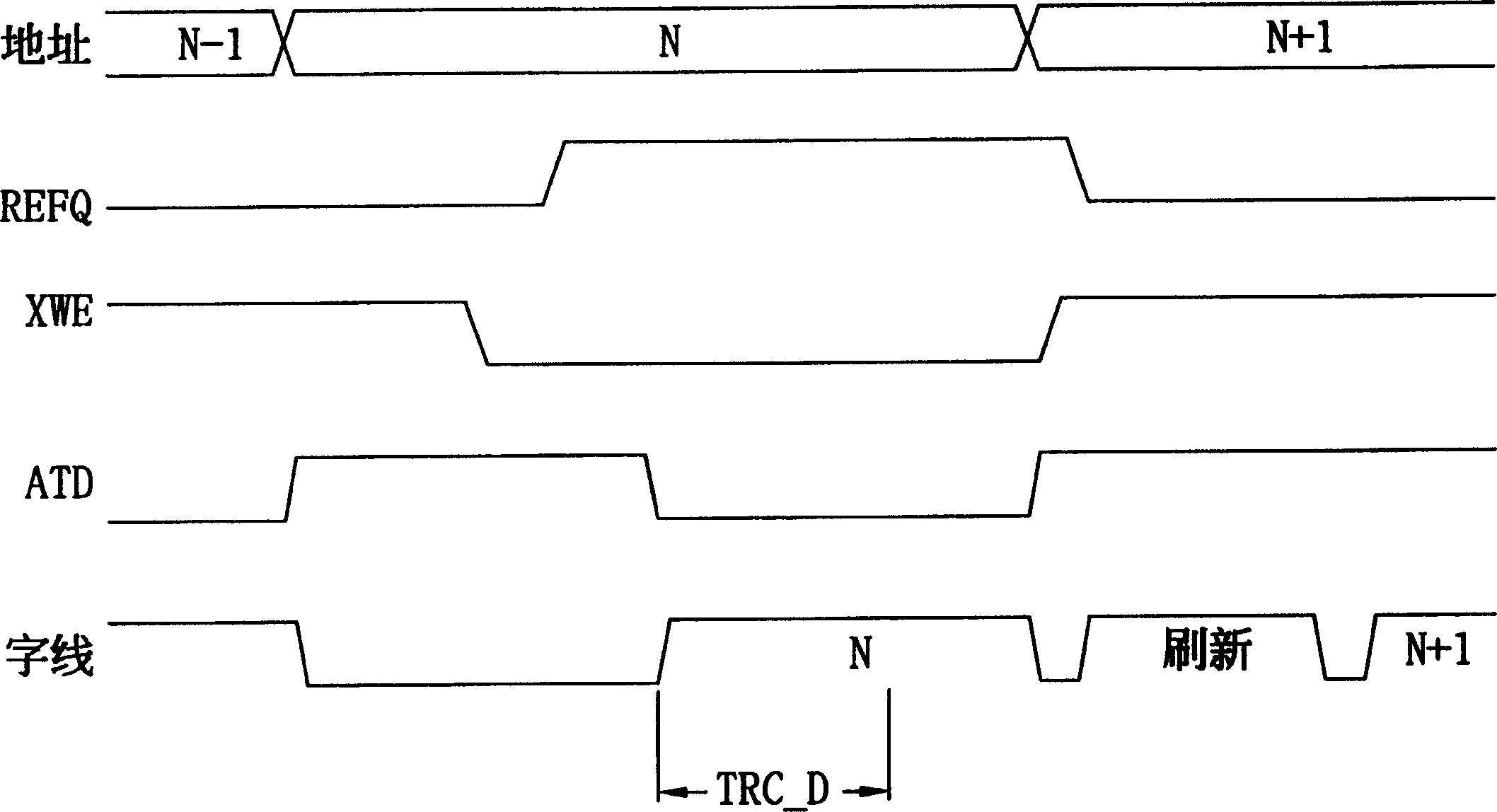Pseudo-static DASD and its data refresh method
A memory access, pseudo-static random technology, applied in static memory, digital memory information, information storage, etc., can solve problems such as read, write and refresh action conflicts
- Summary
- Abstract
- Description
- Claims
- Application Information
AI Technical Summary
Problems solved by technology
Method used
Image
Examples
Embodiment Construction
[0014] The principle of the present invention is to prolong the opening time of the word line according to the cycle of the refresh signal, thereby avoiding the conflict of reading, writing and refreshing, and reducing power consumption. The following will illustrate through several embodiments.
[0015] Generally speaking, 4Kb of data needs to be refreshed within 64 milliseconds (ms), so the refresh interval of each kb of data is about 16 microseconds (ms), that is, the cycle of the refresh signal is about 16ms / time. The following is an example in which the refresh interval is 16ms.
[0016] figure 2 The case where the interval of the example address N is less than 8ms. When address N-1 in an address string is converted to address N, an address conversion signal ATD is converted to a high level, and then the word line of N-1 is turned off, because the refresh signal REFQ is low , so no word lines are turned on. Afterwards, when ATD returns to a low level, the N address w...
PUM
 Login to View More
Login to View More Abstract
Description
Claims
Application Information
 Login to View More
Login to View More - R&D
- Intellectual Property
- Life Sciences
- Materials
- Tech Scout
- Unparalleled Data Quality
- Higher Quality Content
- 60% Fewer Hallucinations
Browse by: Latest US Patents, China's latest patents, Technical Efficacy Thesaurus, Application Domain, Technology Topic, Popular Technical Reports.
© 2025 PatSnap. All rights reserved.Legal|Privacy policy|Modern Slavery Act Transparency Statement|Sitemap|About US| Contact US: help@patsnap.com



